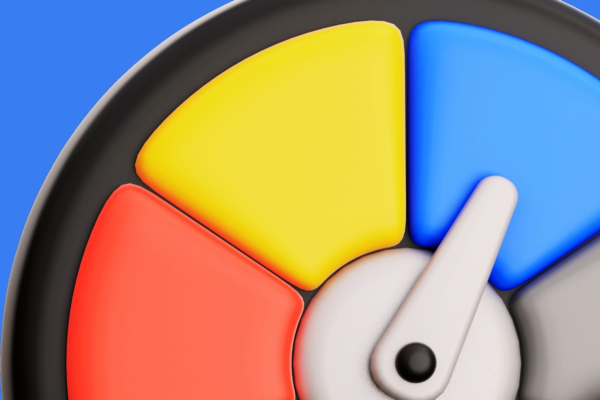
Budgeting Methods with the Right Debit Card

It can be hard to get your finances under control when you’re unsure how much money is coming in and going out of your bank account each month. Budgets are a helpful tool that can unlock the door to financial security. With the right strategies and tools, you can take a proactive approach to your finances, making the overall process of budgeting that much easier.
We’re here to tell you about some of the most popular budgeting methods and show you how getting a good debit card can put you on the right financial path.
Why Budgeting Is Important
Setting out to reach a financial goal without a budget is a lot like going on a road trip without a map. Can you reach your destination? Sure, with a lot of guesswork and frustration. But trips are a lot more fun when you know where you’re going and how to get there!
Your budget is a map to reach your money goals, whether it’s saving for something big, paying off debt, or just having better control over your finances. Budgets are built so you can have a complete understanding of every corner of your finances. By understanding your monthly cashflow, you can:
- Ensure you have enough money for all of your necessities
- Be better prepared for unexpected expenses
- Set more money aside for things you want
- Understand where you’ll be in six months, a year, and even beyond that
The best part of all, budgeting doesn’t have to be a huge hassle! Things like debit cards and online banking have made budgeting easier than ever before.
How Debit Cards Help You Budget
Debit cards lend themselves well to budgeting. For one, using a debit card means using only money that you already have in the bank. This means you can’t find yourself in debt like you can with a credit card.
Secondly, it’s easy to track your spending. Online banking apps let you see in real-time how much money you have, how much you’re spending, and what, exactly, you spend your money on.
Amplify Credit Union offers its members a unique third advantage. You can get multiple debit cards for multiple accounts. This makes it easy to set money aside and access it for specific purposes. We’ll talk more about how to do this in the upcoming sections.
Add Card Controls for Next Level Budgeting
The ability to control your debit card from your phone or mobile banking is incredibly useful–especially if your card has been lost or stolen. But did you know that card controls can also help you budget? Here are some of the best features to help you wrangle your finances:
- Customize your alerts or controls by location, merchant types, transaction types, and spend limits
- View every recurring payment on your card within 30 days of your most recent transaction.
- Identify recurring subscriptions
By adjusting controls and keeping an eye on payments and subscriptions, you can make sure everything flowing from your account is well-within your limits.
Popular Budget Methods to Try
There is no right or wrong way to budget, but some methods are better to reach specific goals. Since it all comes down to personal preference, it can help to know and even try several of the popular methods.
The Traditional Budget
To do a traditional budget, you’ll sit down and tally up your income and expenses. Based on what you are currently spending, set savings and spending goals for different categories. Throughout the month, make sure that you are keeping an eye on your spending habits, measuring them against the goals that you set.
Even if you’re using paper and pencil, a debit card can help you with your traditional budget. Because they’re linked to your bank account, you can login to your banking app anytime to see how much you have and what you’ve spent. This can help keep you on the right path.
Envelope Method
Also known as “cash stuffing”, the envelope method is a cash-based approach in which you divide funds each month between categories. This budget helps you wrangle spending by placing limits on what you can spend in each category. Once the money in the envelope is gone for the month, you’re done spending in that category.
Though this method is typically done with physical cash and envelopes, it can also be done with debit cards. By having multiple savings or checking accounts as envelopes, you can designate funds for specific spending categories like entertainment, travel, gifts, and more. You set the amount of money in each “envelope” every month, so you have complete control over how much gets spent.
50/30/20
This is similar to the envelope method in that you have categories that you assign your money to. However, instead of having your choice of categories, you would have three debit cards: one for necessities, wants, and savings and/or debt repayment.
With this plan, no more than 50% should go towards your basic necessities like housing, utilities, and food. The next 30% can go towards wants like entertainment and eating out, and the last 20% should be set aside for savings or paying off debt.
Using Other Percentages
Many financial experts recommend setting budgets based on percentages of total monthly budget—you don’t have to stick with 50/30/20. For example, some people go by the 80/20 budget, which puts 20% in savings and allows you to freely spend the rest. Others get even more specific with categories, setting aside 3% every month for a vacation fund, or keeping restaurant spending to no more than 6%. What numbers you use will depend on what you’re hoping to accomplish, and how specific you want to get.
Zero-based Budget
The zero-based budget is also similar to the envelope method. The idea behind this is that you have a purpose for every dollar. Every dollar that comes in should have a purpose, even if that purpose is to be tucked away in savings. The end result is that your income minus your expenses is zero.
Several budgeting programs and apps out there are based on the zero-based approach. Often, they will link to your checking account so that when you make a purchase with your debit card, it automatically subtracts the money from your allotted amount in that category. This can be helpful and allow you to visualize how your money is divided up.
The “No Budget” Budget
This plan is great for those who have been around the budget block a few times and have financial discipline. Instead of going line by line and assigning numbers to categories, the goal is to automate the process. The most important thing to know is simply how much money you have coming in each month and what necessities need to be covered, which can be found in your banking app.
You’ll start this process by automating your savings. Each month, a determined amount of take-home pay should be automatically transferred to a separate savings account. You will also set up automatic withdrawals for your bills. Aside from that, you are free to do what you want with the leftover money.
Continuous Budgeting
Continuous budgeting is often used in business, but some people apply the principles to their personal budgeting. Instead of having numbers or goals that are set in stone, continuous budgeting is flexible. This allows you to set tentative money goals for a set period of time, say six months, but reevaluate and update your plans each month. Continuous budgeting is helpful for someone who works different hours over the year. People who earn more commission during a certain time of the year, workers who only have overtime during certain seasons, or teachers who take the summers off might find continuous budgeting useful.
Ready to get your finances in order with a budget?
Keeping track of your financial plan is a great way to plan for the future. Some people who have found their way to financial freedom started by checking their budget weekly. Others found that using a debit card in combination with a great budget strategy helped them get on the right track. Remember: if a budget tool doesn’t work for you, don’t give up—try another one! There’s a reason why there are so many ways to keep track of finances.
Once you find a budget system that works for you, keep up with it monthly! Check in to make sure your spending habits and savings are on the right track, and celebrate your financial victories.


